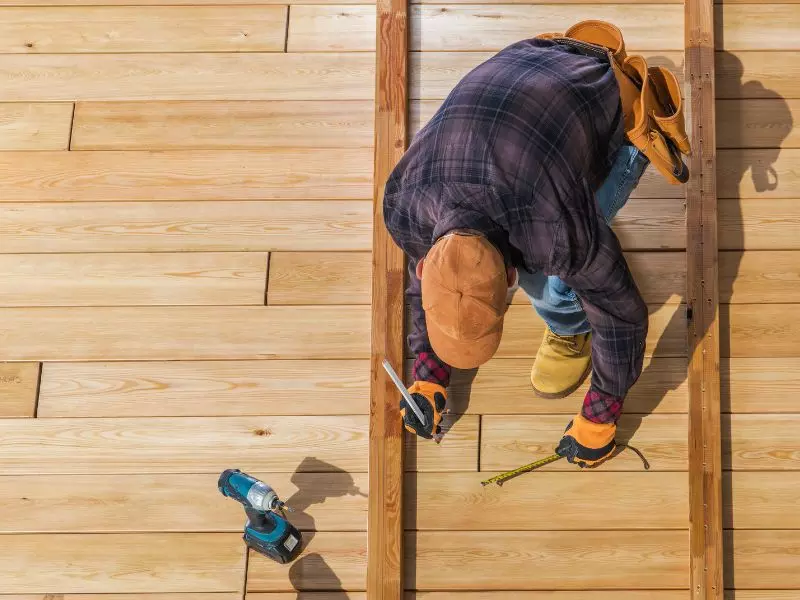
Decks are one of the most popular home renovation projects people add to their homes. They serve as a great space for entertaining, relaxing outdoors, and can even add value to your home.
But what many people don't realize is that not all decks are built equal. In order to enjoy your deck for years to come, there are certain steps you need to take during the building process. Building a deck is not a small undertaking. It takes time, effort, and money. But if done correctly, either by yourself or a professional home building company, you will have a beautiful space to enjoy for years to come. Here are some tips on how to build a deck that lasts:
How to Build Your Deck for the Long Term
Pay Attention to the Foundation
As with any new construction project, the foundation of your deck is the first and most important thing to get right. If your deck does not have a solid foundation, it is likely that it will not last as long as you would like. When laying the foundation for your deck, make sure to use concrete footings and posts. These will provide a sturdy base for your decking materials and help to prevent shifting and settling over time.
Build Your Deck With a Strong Wooden Frame
Once your sure the foundation is solid, the next step in building your deck is to make sure that the lumber you're using is the right type and thickness for the size deck you're building. Be sure to use pressure-treated lumber for all of the structural components of your deck. This type of lumber is treated with chemicals that will help it resist rot and decay, both of which can shorten the lifespan of your deck.
If you're building the deck yourself, then this might be the step where you either call in a professional or seek professional advice, since there's no benefit to be had of a strong foundation if the frame above it is rickety.
Avoid Joining the Deck to the Siding of Your Home
While it might be tempting to save time and money by attaching your deck directly to the siding of your home, this is not advisable. When you do this, it makes it more difficult to make repairs or replacements to either the deck or the siding in the future without damaging the other. Instead, leave a gap of about an inch between the deck and the siding to allow for expansion and contraction over time.
Choose the Right Materials
When it comes to decks, there are various materials you can choose from including wood, composite, and plastic. Each has its own benefits and drawbacks. For example, wood is a natural material that gives your deck a classic look. However, it requires more maintenance than other materials and can rot over time if not properly cared for. Composite and plastic are newer materials on the market that require less maintenance but may not have the same classic look as wood.
Assuming you are going to build your deck with wood, which is what a lot of homeowners tend to opt for, make sure you choose the right kind of lumber. Treated lumber is always a good choice as it is less likely to warp or rot over time. Cedar and redwood are also two other popular choices for wood decks as they are naturally resistant to rot and pests.
Minimize Wood-on-Wood to Avoid Moisture Rot
One of the main problems that causes decks to rot is moisture. When water seeps into the cracks and crevices between boards, it can cause the wood to rot. To avoid this problem, use as few screws or nails as possible when attaching your decking boards. Instead, opt for hidden fasteners that will keep the top of your decking boards smooth. This will help to reduce the chance of water seeping in and causing rot.
If you do have to use screws or nails, make sure they are stainless steel or another type that is resistant to rust. In addition, it's a good idea to apply a sealant to your decking boards before attaching them. This will help to create a barrier against moisture and will further reduce the chance of rot.
Stain or Seal Your Deck Regularly
Another important step in making your deck last is to regularly stain or seal it. This will help to protect the wood from moisture and will also give it a nice finished look. When choosing a sealant, be sure to choose one that is specifically designed for decks. This type of sealant will be more durable and will better withstand the elements.
Build Your Deck With the Future in Mind
When you're building your deck, it's important to think about the future. In other words, don't just build a deck that will meet your current needs but also one that can be easily expanded or modified in the future if necessary. For example, if you're planning on adding a pool in the future, make sure your deck is big enough and has enough support to accommodate the weight of the pool. In addition, leave enough space around the deck for people to walk comfortably and for furniture to be placed.
Conclusion
Building a deck is a big investment, but it's one that can pay off in the long run. By following the tips outlined above, you can be sure to build a deck that will last for years to come.
